Structural retrofitting techniques and fire safety regulations for structures in glulam.
Two new floors in CLT at Royalty Studios in London
The CLT structural retrofit
A new look for Royalty Studios: the 1980s London office building was recently the focus of an interesting modernising project.
The design by Studio Allen, implemented by Construkt CLT, included the addition of two new floors in CLT, a rear extension and the refurbishment of the existing building.
The project also involved improving accessibility in accordance with DDA standards, and upgrading the Energy Performance Certificate (EPC) to Class A.
The structural retrofit of the existing concrete and brick building, achieved through the addition of two new floors entirely in CLT, increased the building's volume while preserving its original layout, minimising additional loads and ensuring compliance with current fire safety regulations.
The project was developed by Studio Allen and implemented by Construkt CLT, specialists in managing engineered timber construction sites.
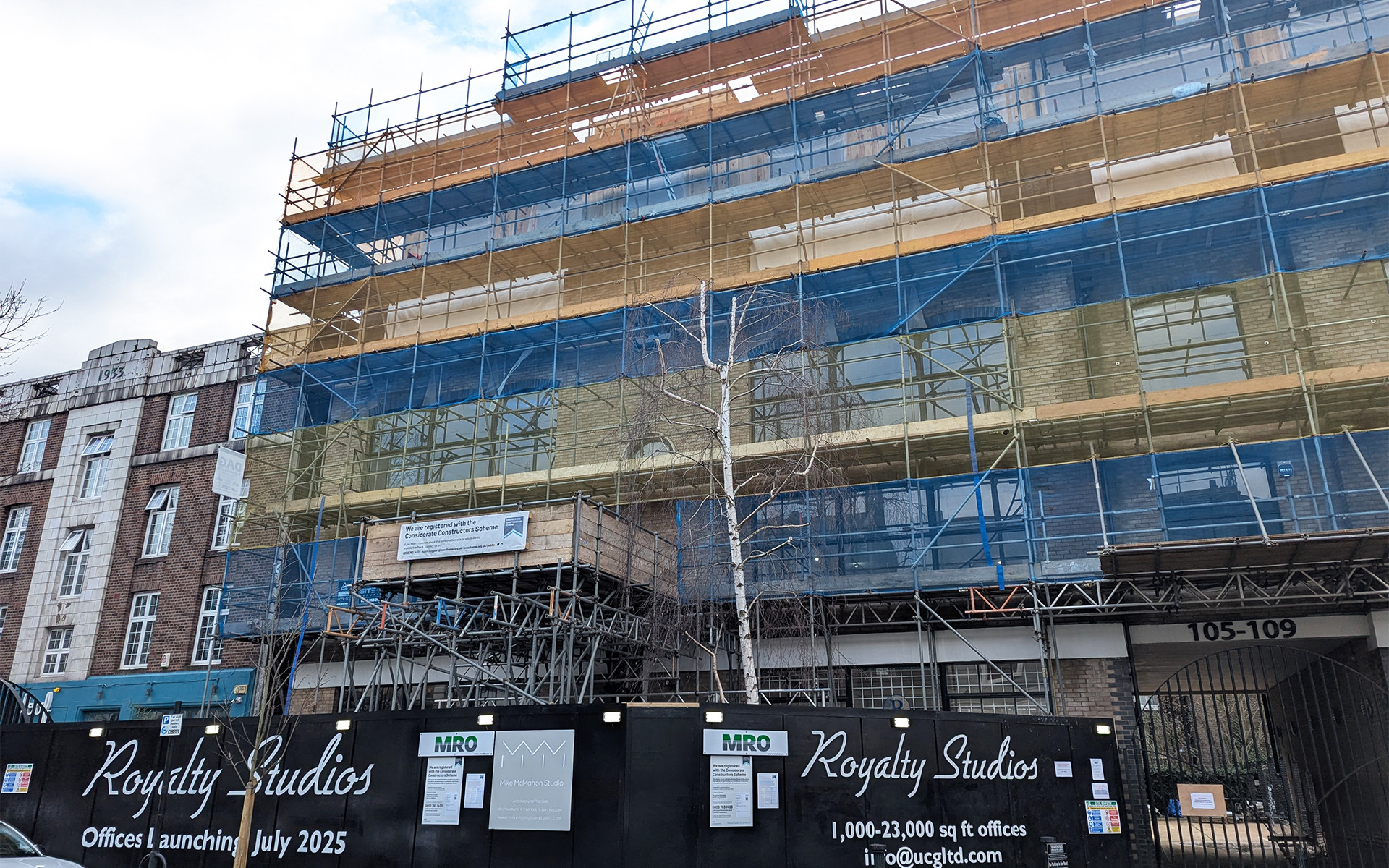
A lightweight addition: the advantage of glulam structures
The use of glulam structures made it possible to limit weight and improve overall dynamic performance.
Thanks to its average density of 450-500 kg/m³, the CLT made it possible to create a 20x13 metre structural grid using just two timber supports and two metal reinforcements.
This configuration reduced the stresses transmitted to the existing building and ensured an even distribution of loads, with no need for significant bracing.
The use of CLT allowed the slabs to be treated as bidirectional elements, improving overall stability compared to traditional truss structures.
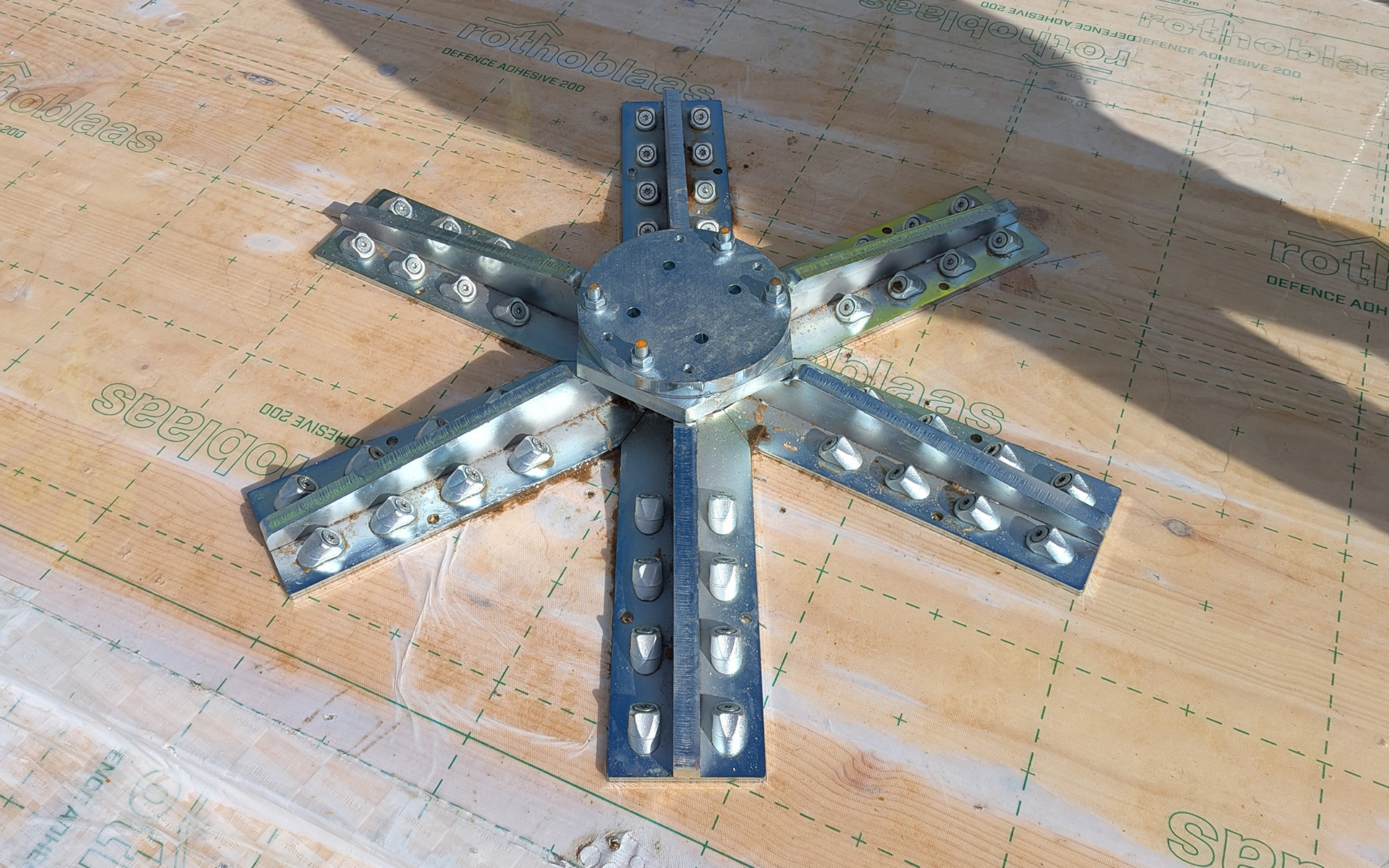
Timber construction: how the right solutions improve load management
The design incorporated some of the most advanced solutions for solid timber construction: the installation system involved fastening the panels directly onto the existing roof using ALUSTART adjustable supports, which corrected any unevenness and kept the panels dry, even in the presence of moisture between the two different materials.
The main structural connections between the columns and floor slabs were made using PILLAR and SPIDER systems, designed to ensure the transfer of vertical and horizontal loads without abnormal stress concentrations.
The connections were secured with WKR angle brackets, and TBS, HBS and VGS screws by Rothoblaas, providing improved resistance to tensile forces, shear and combinations of accidental actions (e.g. wind, earthquake).
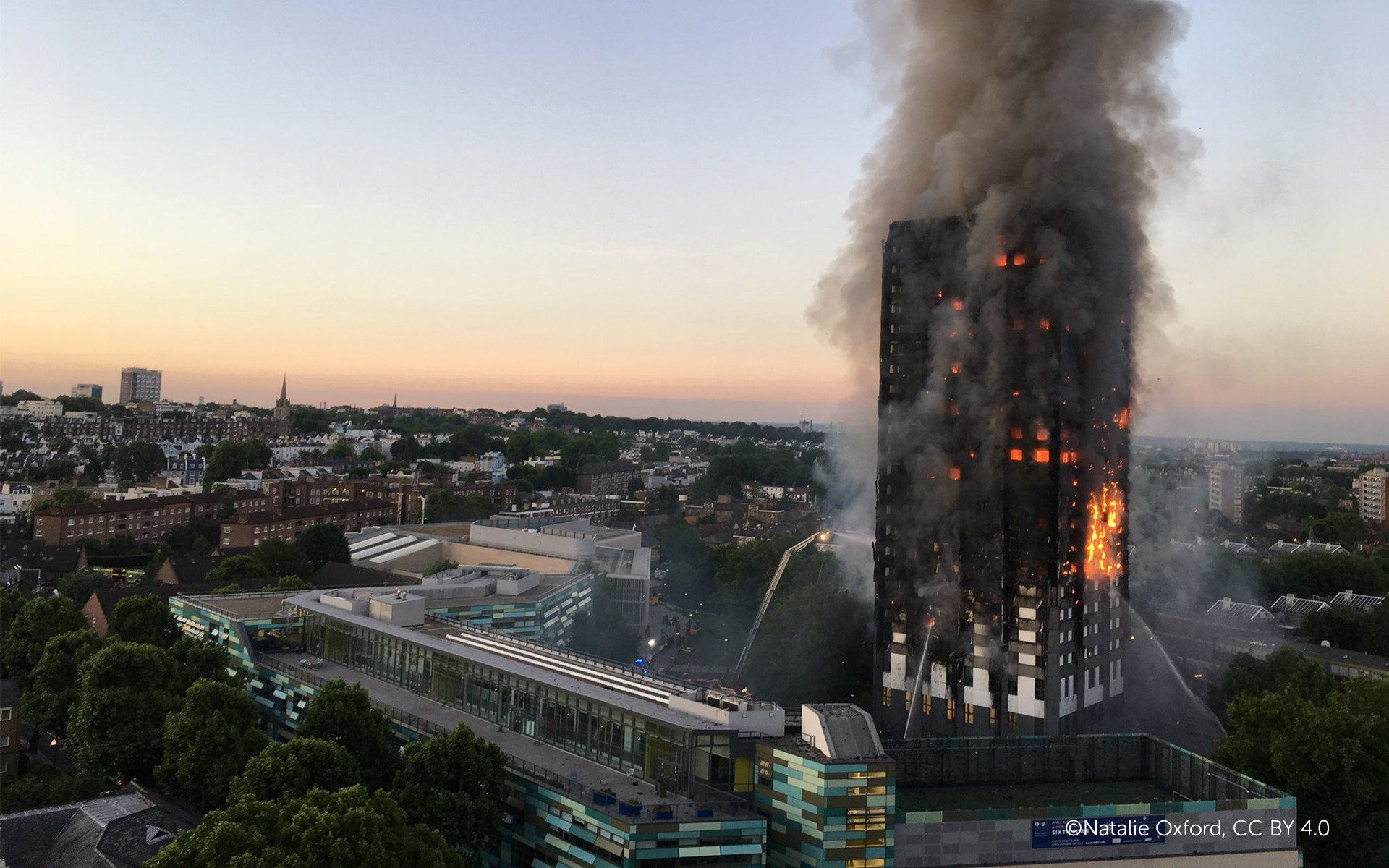
UK fire safety regulations in construction: application in the Royalty Studios project
The vertical extension was carried out in compliance with the strict fire safety regulations in force in the UK following the Grenfell Tower fire, which impose severe restrictions on the use of combustible materials on façades and set specific requirements for all buildings over 18 metres in height (UK Building Regulations - Approved Document B: Fire Safety).
Following regulatory changes introduced after the Grenfell Tower fire, fire safety design for structural timber buildings in the UK requires special attention to the fire resistance of load-bearing elements.
Key measures included calculating the expected charring rate of the exposed CLT panels, specifying sacrificial layer thicknesses based on section loss rates defined in EN 1995-1-2, and designing internal compartmentalisation through structural discontinuities and certified fire seals.
The project also included the integration of ventilation and smoke extraction systems compatible with safety requirements.
The overall aim is to ensure that structural elements meet the required minimum fire resistance times (typically REI 60), while reducing or eliminating, where possible, the need for additional protective cladding on exposed timber surfaces.

Waterproofing techniques for CLT: moisture protection on site
During assembly at the Royalty Studios construction site, specific waterproofing techniques were applied to the CLT panels to protect the timber from accidental water absorption and to preserve the mechanical properties of the fasteners, as specified in the design.
Joints between panels and between the various protective membranes were sealed with SMART BAND, while floors and surfaces were protected using a combination of DEFENCE ADHESIVE, INVISI BAND and FLEXI BAND. These systems provided both temporary waterproofing during construction and long-term protection once the structures were completed.
This approach limits the formation of interstitial condensate and water ingress, protecting both the timber surfaces and the metal connections.
Hygrometric measurements taken on site by Construkt CLT recorded a residual moisture content in the panels of 14% (site data, Construkt CLT, 2025) prior to the final enclosure of the building envelope.
This figure falls within the limits set by the applicable technical standards, which require a moisture content below 18% for structural timber in Service Class 1 (source: EN 1995-1-1 Eurocode 5).
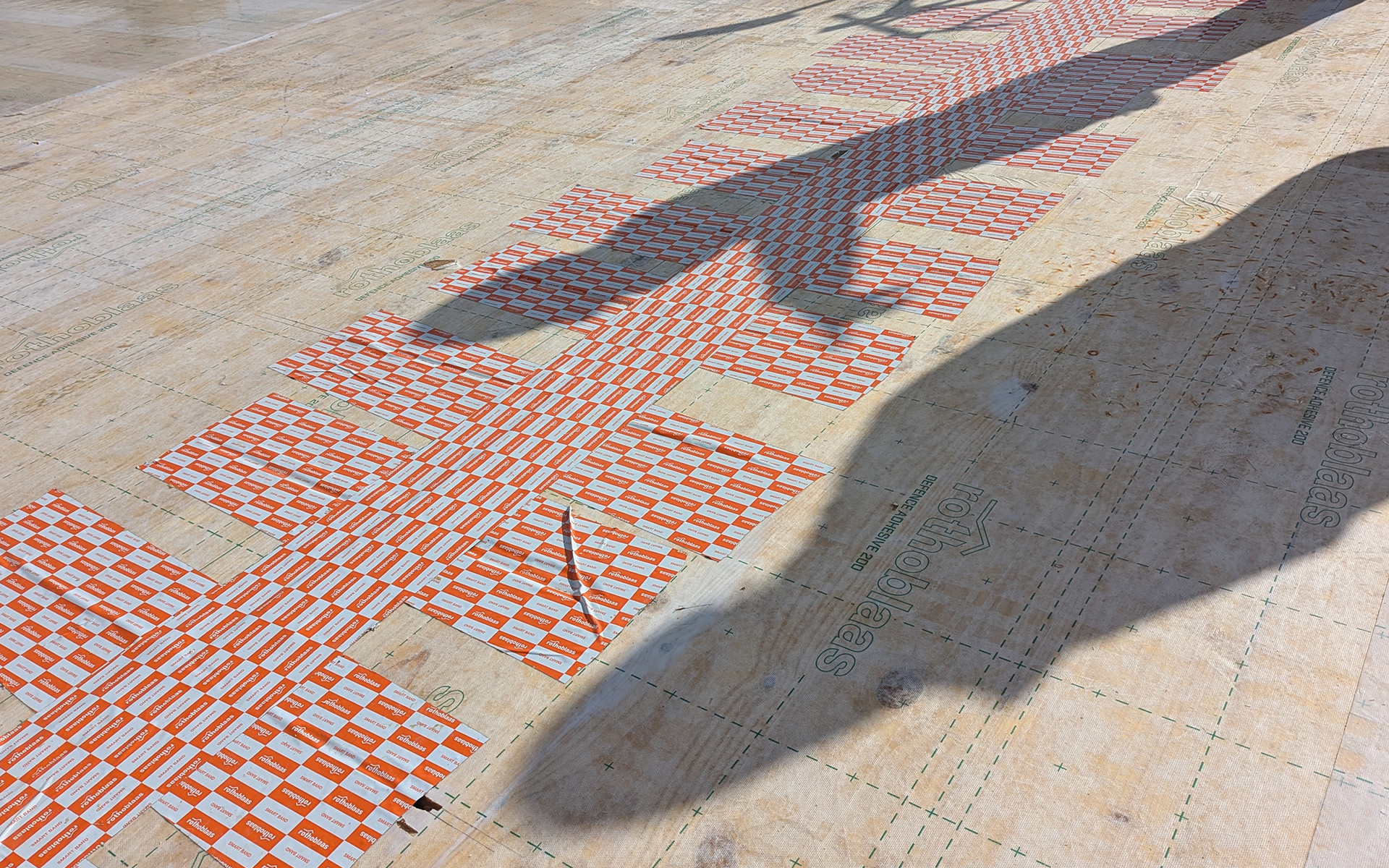
Moisture protection during construction is crucial in CLT building sites, since even short-term water absorption can compromise:
The mechanical strength of the panel
Long-term performance due to accelerated creep
The adhesion and integrity of mechanical connections and sealants
Fire performance, due to increased surface density in charred panels
In the Royalty Studios project, in particular, proactive moisture management helped:
Avoid delays in completing the roofing system
Reduce the risk of localised deformations and dimensional changes in the panels
Preserve the visual quality of the exposed CLT as intended in the architectural design
This project highlights the importance of integrating structural design with carefully planned temporary protection measures, particularly in urban environments with variable weather conditions, such as London.
Selecting the right waterproofing system largely depends on the specific climate conditions – have you tried our configurator yet?
Click here: https://www.rothoblaas.com/climatic-filters
All rights reserved
Technical Details
- Year:
- 2025
- Companies:
- Rothoblaas
- 国家:
- United Kingdom
- 产品:
- ALU START DEFENCE ADHESIVE FLEXI BAND HBS INVISI BAND PILLAR SMART BAND SPIDER TBS VGS WKR

